Vegetable Lists
-
Occurrence and integrated control of powdery mildew of Zizania caduciflora
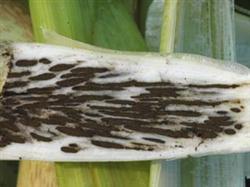
Powdery mildew of Zizania caduciflora is the main disease of Zizania caduciflora, which mainly harms leaf sheath and flesh, resulting in the decline of yield and quality of Zizania caduciflora. The main symptoms and comprehensive control methods of the disease are briefly introduced as follows: first, the main symptoms: leaf sheath infection in the initial stage, the spot is a dark green dot, and then developed into an oval tumor-like process, late leaf.
2018-09-12 -
The basic process of planting rape

The basic process of planting rape
2018-09-12 -
How to manage Zizania caduciflora for overwintering
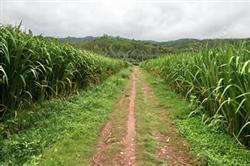
Zizania caduciflora is a temperature-loving plant, which propagates asexually by tillers and tillers. It is suitable for growth at a temperature of 10-25 ℃ and is not resistant to cold, high temperature and drought. The frost-free period in the cultivated area is more than 150 days, and its leaves die after frost, and it can withstand a low temperature of-10 ℃ in dormant period. The frost-free period in northern China is short, mainly planting single-season Zizania latifolia, suitable for single-season Zizania latifolia.
2018-09-12 -
Planting methods of Chinese cabbage

Planting methods of Chinese cabbage
2018-09-12 -
Do not neglect the treatment of covering soil in the prevention and control of dead seedlings of chrysanthemum.
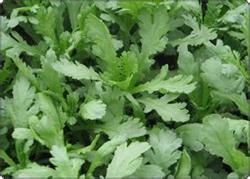
A unique ingredient with antifeedant activity, artemisinin, was isolated by scientists of Shanghai Institute of Organic Chemistry, Chinese Academy of Sciences, and a number of artemisinins were synthesized by a new synthetic method for the first time in the world. tested by South China Agricultural University, an authoritative unit of antifeedant research in China, this kind of artificial.
2018-09-12 -
How to grow double-season Zizania caduciflora
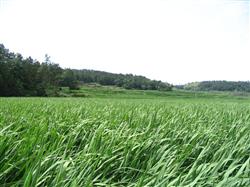
The main cultivation techniques are as follows: 1. The double-cropping wheat variety we selected is Shuizi wide. According to the comparative observation of introduction for many years, Suozimei is a late-maturing variety in Chunmei and an early-maturing variety in Autumn and Mongolia. This variety has fleshy stem, white and smooth color, 110-180g single weight of Zizania latifolia and Zizania latifolia.
2018-09-12 -
How to do well the selection, purification and rejuvenation of Zizania caduciflora
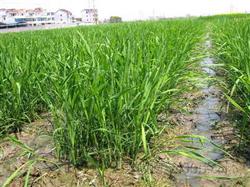
When planting Zizania caduciflora, it is generally necessary to achieve "three selections", that is, primary selection, relocation and selection. Six to seven days before harvest, the initial selection method is to select plants with fleshy stems, large stems, flat leaf sheaths and other fleshy stems, grow neatly and uniformly, and use the plants with special slices as seed plants, and the plants with multiple selection during the harvest period to remove Zizania caduciflora.
2018-09-12 -
How to prevent and cure tomato virus disease

How to prevent and cure tomato virus disease
2018-09-12 -
Artemisia annua L. and its cultivation techniques in greenhouse
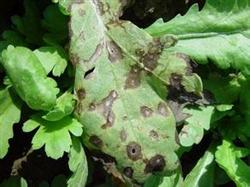
The gray spot of Artemisia annua is a fungal disease, which produces round and near-round spots on the leaves, which are semicircular or irregular at the edge of the leaves. The lesion is 2Mel 4mm in diameter, the middle part is grayish brown, the edge is dark brown, and there are wide rims. When the humidity is high, gray mildew grows on the disease spot. The pathogen is mainly out of season with the disease residue, and the diseased plant produces.
2018-09-12 -
Cultivation techniques and Management methods of Artemisia annua L.
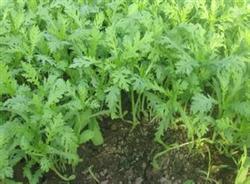
1. Artemisia annua L. should be cultivated in sandy loam soil, which requires convenient irrigation conditions. After selecting the land, turn the soil and apply fine farm manure, applying more than 1000 kg per 0.1ha and 25 kg diammonium phosphate as base fertilizer. Make a flat bed with a width of 1.2 to 1.4 meters and a length of 10 to 20 meters, ready to sow seeds. Second, sowing and raising seedlings.
2018-09-12 -
Technical points of field management measures of Artemisia annua L.
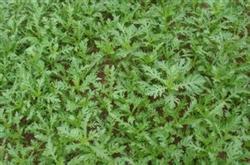
The work of interseedling is done well, chrysanthemum not only has high yield, but also does not bend, and the quality is good. In addition to selecting seedlings with the same growth, we should also pay attention to the appropriate time between seedlings. If the seedlings are too early, it is easy to take secondary work, because the seeds sown into the ground will not grow at the same time, some seed seedlings have been unearthed, while others.
2018-09-12 -
Cultivation techniques of Artemisia annua in Solar greenhouse
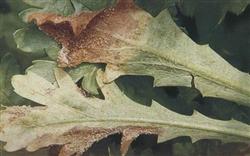
Planting density should be reasonable, avoid over-close planting; re-apply base fertilizer, increase organic fertilizer, control the amount of nitrogen fertilizer, prevent excessive growth; do not flood irrigation, timely drainage after heavy rain. Can you choose 58% nail cream at the initial stage of the disease? Manganese zinc wettable powder 500 times liquid, or poison alum 64% bad mold? Mn-Zn wettable powder 500 times liquid spray.
2018-09-12 -
Comprehensive control of chrysanthemum downy mildew in autumn
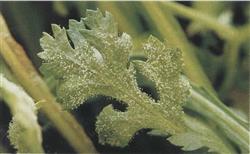
The downy mildew of Artemisia annua is mainly harmful to leaves. At the initial stage of the disease, a light yellow nearly round or polygonal disease class was produced on the old leaves of the lower part of the plant, which gradually spread to the middle and upper part of the plant, and the disease class was yellowish brown in the later stage. When the humidity is high, there is a white mildew layer on the back of the class. Bacterial infection.
2018-09-12 -
Cultivation of chrysanthemum in greenhouse in autumn and winter
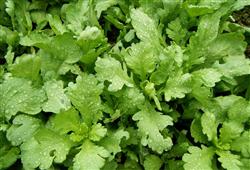
Because chrysanthemum has the characteristics of low temperature tolerance, cold preference, poor light tolerance, low light saturation point and photosynthetic intensity, it is not only feasible to cultivate chrysanthemum in greenhouse in autumn and winter, but also can be listed during Spring Festival, greatly improving economic benefits. The main points of cultivation are as follows: 1. Time in the northern region is 10...
2018-09-12 -
High-yield cultivation techniques of Artemisia annua L. in greenhouse
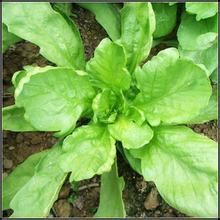
Artemisia annua is an annual green leafy vegetable of Compositae. Its cultivation techniques are as follows: 1. It is best to choose sandy loam for soil preparation and cultivation of Artemisia annua, which requires convenient irrigation conditions. After selecting the land, ploughing and ploughing, and apply a small amount of dried manure as basic fertilizer, mixed evenly with the topsoil layer to make a flat bed 1.4 to 1.5 meters wide.
2018-09-12 -
Cultivation and pest control techniques of Artemisia annua L.
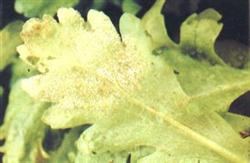
First, field identification: Artemisia downy mildew can occur from seedling stage to adult stage. At the initial stage, the chlorotic macula with inconspicuous edge was produced on the leaves, the back of the disease spot was densely white to yellowish white mildew layer, and the diseased leaves withered rapidly. With the development of the disease, the adaxial surface of the diseased leaves is also densely white to yellowish white mildew layer. When it's serious.
2018-09-12 -
Knowledge of cultivation techniques for growing lettuce outdoors in shed
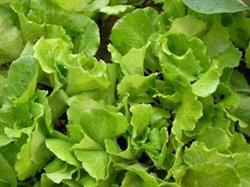
Growers with greenhouses can cultivate leafy vegetables such as lettuce in the open space outside the shed, make full use of land resources and improve economic benefits. Lettuce also known as leaf lettuce, lettuce package, Qianjin vegetables, etc., should be able to eat raw and named. Any of several edible annual herbs of the genus lettuce (compositae) that form leaf bulbs or tender leaves. The leaves of lettuce...
2018-09-12 -
Summer tube technology of heading lettuce
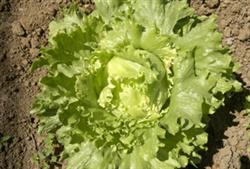
First of all, we should pay attention to fertilizer and water management. Due to high summer temperature, strong light, large ground evaporation and large crop transpiration, it is necessary to often water the soil at the initial stage of planting to keep the soil moist. Entering the rainy season from July to August, after each heavy rain, we should timely drain waterlogging and pour cold water to cool down in order to protect the leaves. Proper water control in the later stage of growth.
2018-09-12 -
High-yield cultivation techniques of spring onion

High-yield cultivation techniques of spring onion
2018-09-12 -
Key techniques of lettuce cultivation in open field
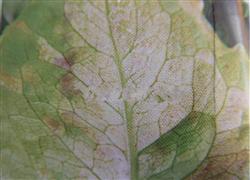
1. Symptoms of the disease: both seedlings and adult plants can suffer from the disease, and the damage to the adult plant is heavy, mainly harming the leaves. The diseased leaf spreads upward from the lower part of the plant, and at first there is a yellowish near-circular polygonal spot on the leaf. When it is wet, the disease spot on the back of the leaf grows white mold, that is, the cyst peduncle and sporangium of the pathogen, sometimes spreading to the front of the leaf, and later.
2018-09-12
